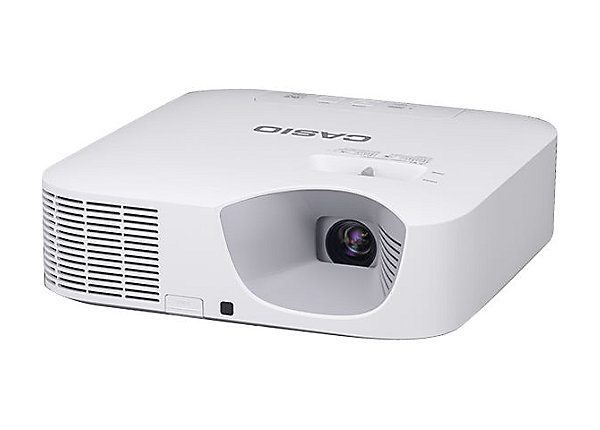Panasonic PT-AE7000 vs. Sony VPL-HW30ES
Bad timing! I couldn't hang on to the Sony VPL-HW30ES long enough to have them both here at the same time.
Like with the Optoma, again, when reviewing the Panasonic, I was wondering: "how can the Sony VPL-HW30ES compete?"
The Panasonic has the Lens Memory, if you want to go "Cinemascope" screen and not spring for an expensive anamorphic lens, that's a strong benefit.
These two projectors are close in price, with about a $700 or less street price difference. The Sony is going to be tough to find online, as it's not supposed to be available there.
Placement advantage, of course goes to the Panasonic, and all considered, it clobbers the otherwise well featured Sony, in number of features.
Let's talk Picture Quality. Now that I've seen the Panasonic take on the Optoma in terms of black levels, and come up a bit short, I can conclude that the Sony VPL-HW30ES too has the advantage on blacks, which will appeal to those of us who really love the advantage on darker scenes. I'd count these two, to be about tied, in terms of dark shadow detail.
Give the Sony the advantage on darker scenes in general, and also a touch more "pop".
Sharpness: Both are perfectly good, sharp projectors, but those few DLP projectors are typically "sharper still".
Brightness: Brightness considerations will be a huge factor. That's because these two are so different, each with a major strength and weakness compared to the other.
Post calibration, the Panasonic PT-AE7000U's 422 measured lumens, are barely half of the Sony's just over 800. Movie afficianados, and in general, for folks with good controlled lighting and not needing lots of lumens for things like sports, and HDTV, will be able to enjoy a brighter pictures or a significantly larger screen with the Sony VPL-HW30ES.
On the other hand, for those needing or wanting the maximum lumens for the purpose of fighting ambient light, the Panasonic is a good 50% brighter when comparing bright modes. That makes the Panasonic the choice for a lot of folks, such as those watching sports with friends in a living/family room environment.
For 3D though, the advantage is the Panasonic. It's just brighter. Here the 50% advantage in brightness, does make a difference.
More likely, matching these two projectors to your room and your watching habits will be more critical than most of the aspects of the picture quality. It's an old quandry, with a 3D twist thrown in. As a side note; in the past, the price spread was much larger, the Sony costing a lot more.
Panasonic PT-AE4000 vs. Panasonic PT-AE7000
Overall, since the PT-AE7000 seems to be an evolved PT-AE4000, but with 3D and a whole lot more lumens. I haven't had a PT-AE4000 here in quite some time. That said, despite the increase in published contrast ratio, I don't see any significant improvement in black level performance.
Since the PT-AE4000's are by now, out of production (11/14/11), most likely they won't be around very long, from days to a couple of months.
While they are still available, some potential PT-AE7000 projector owners may do better for themselves with "last year's model." That would be mostly three types of home theater folks: Those with no interest at all in 3D, those looking for a big boost of lumens, and those desiring both the brightness and 3D abilities.
As those are the major enhancements, consider that in a typical year to year, one would expect improved performance for slightly less. If the extra 500+ lumens isn't important to you, nor is 3D, then it will be very hard to rationalize the PT-AE7000 for an extra $1000.
On the other hand, 3D and all those extra lumens do make the PT-AE7000 a whole lot more projector. With a price easily in line with any of the other new 3D capable projectors we've reviewed to date.


